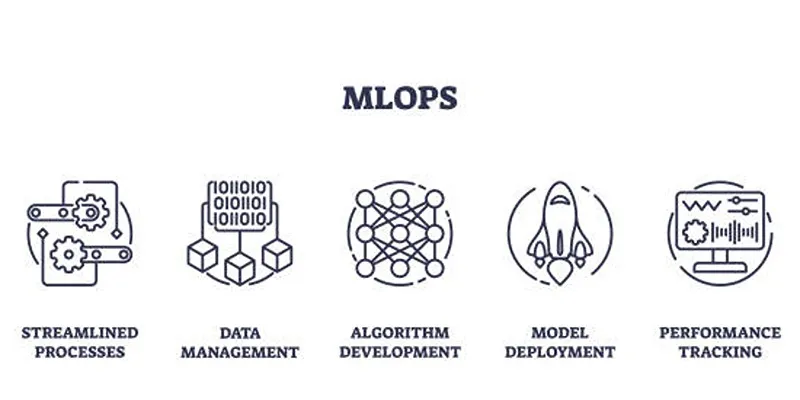Projects in machine learning can be fascinating but also challenging. Time and cost estimation is not always easy. These initiatives span several phases, each requiring meticulous preparation and funding. Ignoring this stage could cause your project to fail or run too expensively. Good estimates enable you to avoid surprises and effectively plan. Your objectives, data, tools, and team will determine time and expenses.
For instance, basic models run in less time than deep learning models. Knowing what to expect helps prevent budget problems and delays. This guide walks through how to create reasonable estimates. You will discover elements influencing time and cost, as well as how to dissect every phase. It will help you schedule your machine learning project confidently.

How to Estimate the Time and Cost of a Machine Learning Project
These are the main steps you should take to project the time and expenses of your machine learning project.
Define the Project Goals and Requirements
First, grasp the fundamental goal of the project. Find out what the model of machine learning ought to perform. It guides your tool and approach selection, facilitates the projection of required resources and effort, and lists the characteristics your model requires. Is it for image classification, prediction, or language processing? Every category calls for varying degrees of time and knowledge. More expensive and time-consuming goals will be complex to achieve. Check also whether the objective is still shifting or clear. Easy planning arises from a steady aim. A shifting objective might entail more time and expenses.
Analyze the Data Availability and Quality
Every machine learning effort revolves around data. Find out first whether the data is accessible. If not, gathering it could take weeks or months, calling for time and money. Look at the data quality next. Is it whole and spotless, or does it feature missing values? Data cleansing can occupy as much time as model construction. Poor models and additional work later follow from dirty data. View the dataset’s size as well. A tiny dataset handles faster. Large datasets call for greater time, storage, and processing capability, raising the expenses of your project.
Choose the Right Algorithms and Tools
The kind of machine learning method influences the time and project expenses. Cheap and quick are simple models like linear regression. Deep learning and other complex models call for more time and strong computers. Also, take into account the instruments and platforms you intend to use. Tools available in open-source can help save money but may demand extra time for setup. While they provide speed, cloud systems might increase the cost. Select tools your staff already knows. Add that time and money to the budget if they require training. Learning new instruments during the project could create delays.

Break Down the Project Into Phases
Sort the project into phases to estimate well. Every phase requires a budget and schedule all its own. This method simplifies and increases the accuracy of planning.
Common phases include:
- Planning: Define the goals and collect project requirements.
- Data collection and preparation: Find, clean, and organize the data.
- Model selection: Choose the best machine learning model for the task.
- Model training and testing: Train the model and check its accuracy.
- Tuning and optimization: Adjust the model for better results.
- Deployment: Put the model into a real-world environment.
- Monitoring and maintenance: Watch the model’s performance over time.
Account for Team Skills and Size
The size and abilities of your staff significantly influence project time and cost. Faster problem-solving and working speed are benefits of a qualified workforce. Skilled professionals might cost more per hour. Given a small crew, the project might take more time. If you add additional people, you might finish earlier. A larger team also follows more communication and management, raising the general expenses. Also, take into account whether you require outside assistance. Hiring freelancers or consultants raises expenses.
Include Infrastructure and Deployment Costs
Projects using machine learning need more than just code. You also require servers, memory, and computational capability, which can raise the expenses of your project. Check the pricing if you make use of cloud systems. You might pay for bandwidth, storage, or computational hours. If your model is run often or is huge, these expenses increase.
Additionally, it requires time for deployment. The model should be tested in practical environments. Sometimes, this stage calls for additional tools or platforms, which could come with expenses. Remember also to track and update the deployment.
Add Buffers for Risks and Uncertainty
Projects on machine learning might suffer delays. Any moment can bring fresh challenges. Always add buffer time and budget for unanticipated problems. Including 20–30% extra time and expenses as a buffer lets you cover hazards without deviating from your overall plan. Review your estimations also rather often and alter them should the scope of the project change.
Use Estimation Techniques and Tools
One can project time and money in various ways. You might apply task-based planning, historical projects, or professional judgment. For best results, combine more than one approach.
A few useful strategies consist of the following:
- Bottom-up estimation: Add up all small tasks for total time and cost.
- Analogy estimation: Use past projects to guess time and cost.
- Three-point estimation: Estimate best, worst, and average times to plan better.
Conclusion
Project time and cost estimation for machine learning require rigorous preparation and knowledge. You must set objectives, examine data quality, and select appropriate techniques. Division of the work into phases simplifies the procedure. Time and money also change depending on infrastructure and team competencies. Including buffers always helps to manage unanticipated delays. Estimating correctly allows one to create a reasonable schedule. As necessary, go over and change your strategy. Clear processes and clever techniques will help you to keep inside your budget and run machine learning projects without problems.
 zfn9
zfn9























